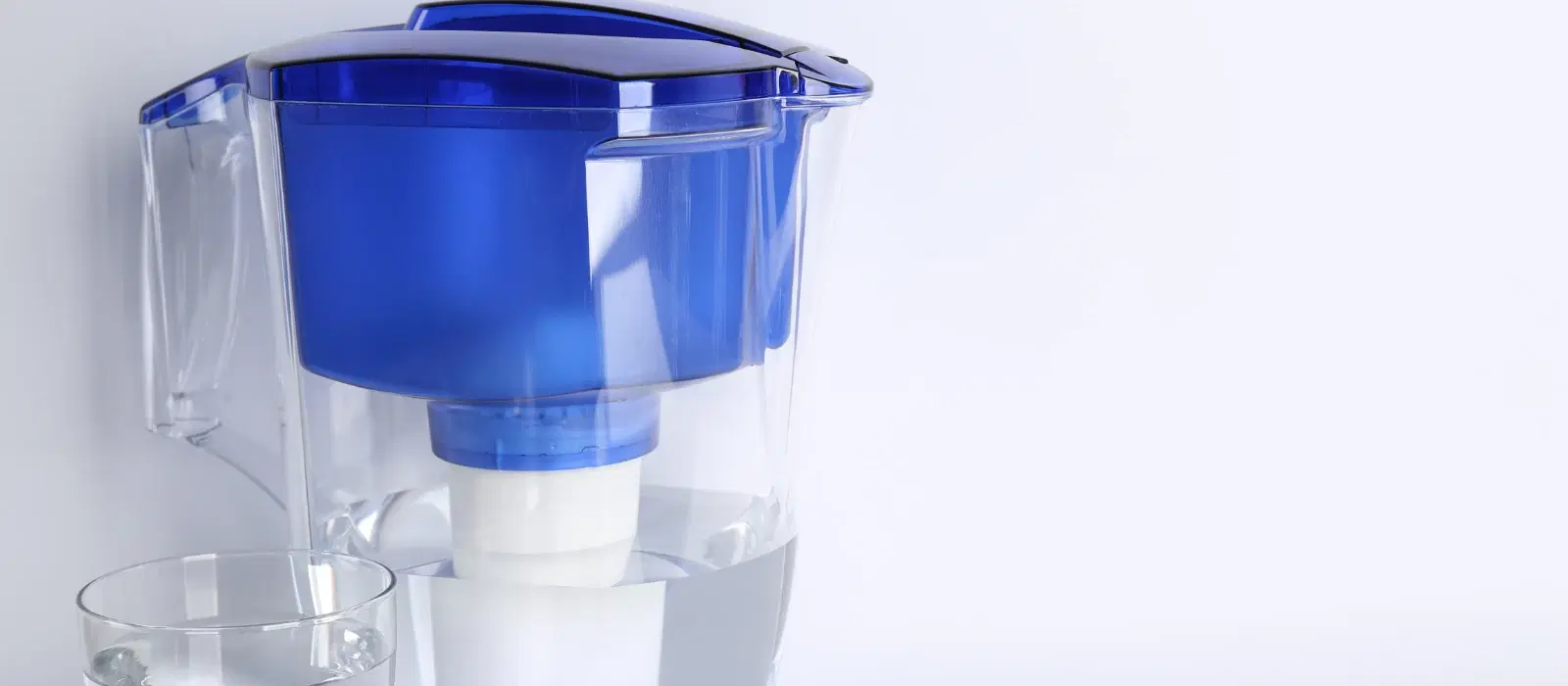
Home Appliances
•05 min read
(56)-25c67828-18cd-4db0-9abc-d8c9cdfed803.png&w=3840&q=75)
Clean water is essential for our health and well-being. With increasing pollution levels, having access to safe drinking water has become more critical than ever. Water purifiers have become a necessity in every household to ensure the water we consume is free from harmful contaminants. This blog will help you understand the different water purification technologies – RO, UV, UF, and TDS – and guide you in choosing the right water purifier for your needs.
Definition: Reverse Osmosis (RO) is a water purification process that uses a semi-permeable membrane to remove ions, molecules, and larger particles from drinking water. In RO, water is forced through the membrane, leaving contaminants behind.
Benefits: RO water purifiers effectively remove a wide range of contaminants, including dissolved salts, bacteria, and heavy metals, providing clean and safe drinking water.
Best For: RO is ideal for areas with high TDS levels and where the water contains heavy metals and other dissolved impurities.
Example: For instance, in urban areas where industrial waste might contaminate the water supply, an RO purifier can ensure that the water is safe to drink.
Definition: UV water purification uses ultraviolet light to kill or inactivate harmful microorganisms in water. The UV light penetrates the cells of bacteria and viruses, disrupting their DNA and preventing them from reproducing.
Benefits: UV water purifiers are highly effective in eliminating bacteria and viruses, ensuring microbiologically safe drinking water without altering the taste or odor.
Best For: UV purification is best suited for areas with microbiologically unsafe water, such as water contaminated with bacteria and viruses.
Example: If you live in an area prone to waterborne diseases, a UV purifier can be a lifesaver by ensuring your water is free from harmful microorganisms.
Definition: Ultrafiltration (UF) is a water purification process that uses a hollow fiber membrane to remove suspended particles, bacteria, and viruses from water. The membrane has tiny pores that allow water to pass through while blocking contaminants.
Benefits: UF water purifiers are effective in removing bacteria and viruses, providing clean and safe drinking water without the need for electricity.
Best For: UF is ideal for areas with low TDS levels and where the water is relatively free from dissolved impurities but may contain bacteria and viruses.
(54)-2681862d-e12f-49cf-a22f-50c57e1aeae1.png&w=3840&q=75)
Example: In semi-urban areas with relatively clean water sources, a UF purifier can provide an added layer of safety without the need for electricity.
Definition: Total Dissolved Solids (TDS) refer to the combined content of all inorganic and organic substances dissolved in water. These substances include minerals, salts, and metals.
Measurement: TDS levels are measured in parts per million (ppm) using a TDS meter. The meter indicates the concentration of dissolved solids in the water.
Ideal Levels: The ideal TDS level for drinking water is between 50-150 ppm. Water with TDS levels within this range is considered safe and palatable.
Example: Regularly testing your water with a TDS meter can help you maintain the ideal TDS levels and ensure the water you consume is safe.
Factors to Consider:
Water Quality: Determine the type of contaminants in your water to choose the appropriate purification technology.
Budget: Consider the cost and maintenance of different water purifiers to find one that fits your budget.
Brand Trust: Choose a reliable brand like Tata Neu for quality products and excellent after-sales support.
Additional Tips: When choosing a water purifier, consider the long-term benefits of investing in a high-quality product. Brands like Tata Neu offer not only advanced technology but also comprehensive after-sales support, ensuring your purifier remains in optimal condition.
Expert Tips:
Regularly maintain and service your water purifier to ensure optimal performance.
Check the efficiency of your water purifier by testing the water quality periodically.
Take advantage of after-sales support and warranty services for hassle-free maintenance.
It is recommended to change the filters in your RO water purifier every 6-12 months, depending on the water quality and usage.
(53)-7be243e5-adca-4996-bab0-8f1a6579c3e5.png&w=3840&q=75)
No, UV water purifiers are effective against bacteria and viruses but do not remove dissolved impurities.
Yes, UF water purification is effective in removing viruses along with bacteria and suspended particles.
The recommended TDS level for drinking water is between 50-150 ppm.
Assess your water quality, consider your budget, and choose a reliable brand like Tata Neu for quality products and support.
Tata Neu's water purifiers offer advanced technology, reliable performance, and excellent after-sales support. Additionally, you can earn NeuCoins on every purchase, which can be redeemed for future shopping.
Regular maintenance, timely filter changes, and periodic water quality tests can help ensure your water purifier remains efficient.
Understanding the different water purification technologies – RO, UV, UF, and TDS – is crucial in making an informed decision about the right water purifier for your home. Ensure you assess your water quality, consider your budget, and trust a reliable brand like Tata Neu for quality products and excellent after-sales support. Explore Tata Neu’s range of water purifiers available at Croma for reliable and efficient water purification solutions. Enjoy expert guidance, cashback rewards, and express delivery services to enhance your shopping experience.
Assess your water quality to choose the right purifier.
Regularly maintain and service your water purifier.
Trust brands like Tata Neu for quality products and excellent after-sales support.
Take advantage of Tata Neu's exclusive benefits such as NeuCoins, EMI plans, and express delivery for a seamless shopping experience.